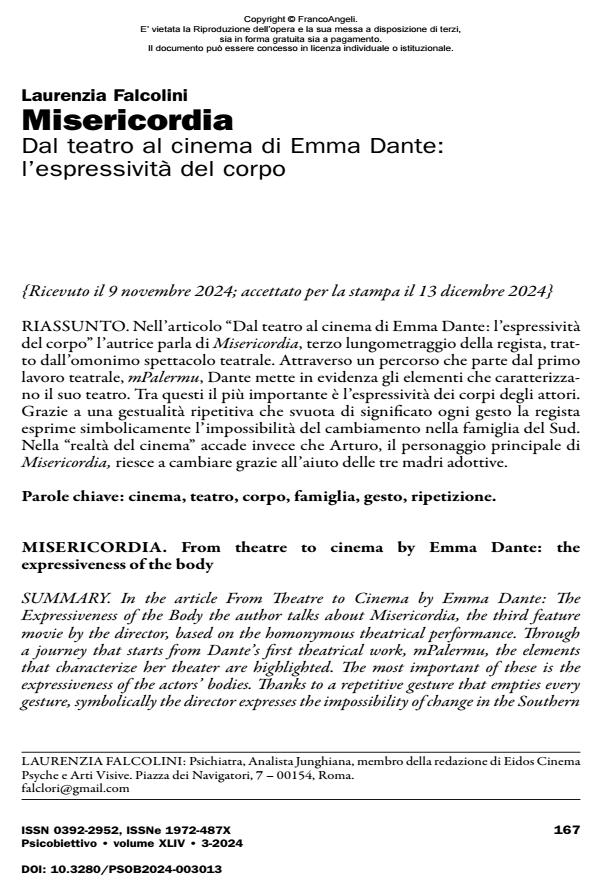MISERICORDIA. From theatre to cinema by Emma Dante: the expressiveness of the body
Journal title PSICOBIETTIVO
Author/s Laurenzia Falcolini
Publishing Year 2025 Issue 2024/3
Language Italian Pages 6 P. 167-172 File size 121 KB
DOI 10.3280/PSOB2024-003013
DOI is like a bar code for intellectual property: to have more infomation
click here
Below, you can see the article first page
If you want to buy this article in PDF format, you can do it, following the instructions to buy download credits

FrancoAngeli is member of Publishers International Linking Association, Inc (PILA), a not-for-profit association which run the CrossRef service enabling links to and from online scholarly content.
In the article From Theatre to Cinema by Emma Dante: The Expressiveness of the Body the author talks about Misericordia, the third feature movie by the director, based on the homonymous theatrical performance. Through a journey that starts from Dante’s first theatrical work, mPalermu, the elements that characterize her theater are highlighted. The most important of these is the expressiveness of the actors’ bodies. Thanks to a repetitive gesture that empties every gesture, symbolically the director expresses the impossibility of change in the Southern family. In the “reality of cinema” however, it happens that Arturo, the main character of Misericordia, can change thanks to the help of the three adoptive mothers.
Keywords: cinema, theatre, body, family, gesture, repetition.
- Dante E. (2007). Carnezzeria, trilogia della famiglia siciliana. Roma: Fazi.
- Falcolini L. (2010). L'intervista a Emma Dante. Eidos-Cinema Psyche e Arti Visive, 17: 12-17.
- Neumann E. (1981). La Grande Madre. Roma: Astrolabio.
- Winnicott D.W. (1996). I bambini e le loro madri. Milano: Raffaello Cortina Editore.
Laurenzia Falcolini, Misericordia Dal teatro al cinema di Emma Dante: l’espressività del corpo in "PSICOBIETTIVO" 3/2024, pp 167-172, DOI: 10.3280/PSOB2024-003013